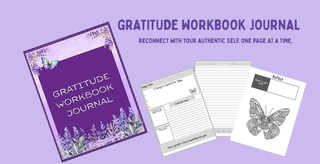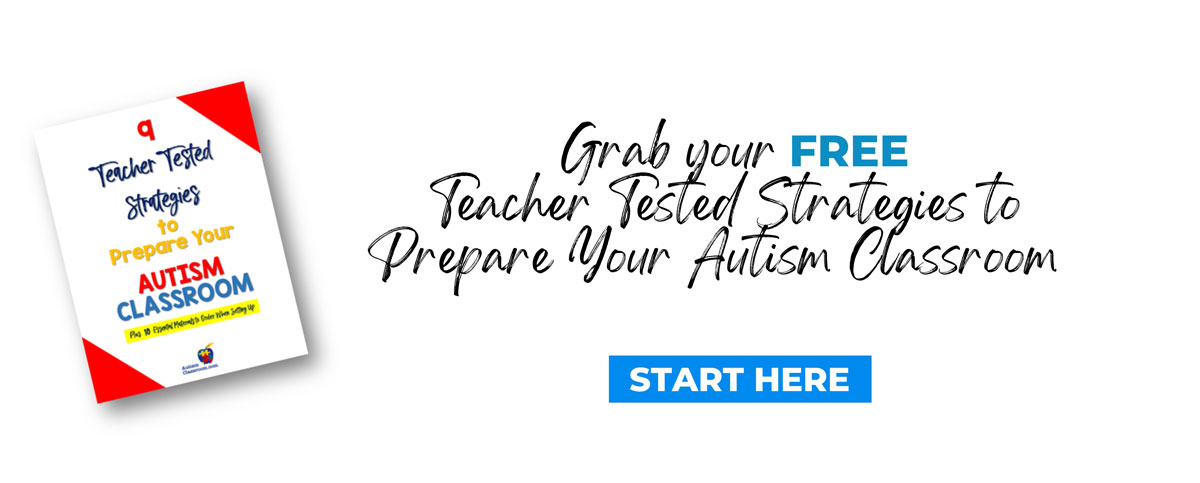 This page contains affiliate links.
This page contains affiliate links.
Maybe today was one of those days where nothing seemed to go right, and you’re wondering if all your effort is even making a difference. Before you let that doubt win, let’s talk about what’s really happening. Teacher burnout is real. Teaching in an autism classroom is hard… like really hard! It’s easy to feel like you’re not doing enough, but the truth is that every effort you make matters. If motivation feels out of reach, here’s how to shift your mindset around setbacks and keep going. And let’s be real. I know you’re exhausted!
1. Reframing ‘Failure’
Remember that time you planned a hands-on sorting activity, and instead of sorting, your student dumped everything on the floor? At that moment, it probably felt like a disaster. But later, you realized they weren’t being defiant, they just didn’t understand the task yet. So you adapted. Maybe you added visual prompts or broke the task into smaller steps, and suddenly, they got it. That wasn't a failure! That was a teaching lesson for you. Instead of seeing setbacks as failures, try to view them as learning opportunities. A lesson that didn’t go as planned or a student’s difficult day doesn’t mean you’ve failed. Believe it or not, it means you’re learning what works and what doesn’t. Give yourself the same grace you give your students.
2. Celebrating Small Wins
Imagine that student who struggled with transitions every single day, dropping to the floor whenever the schedule changed. But last week? With just a little prompting, they moved to the next activity. That’s real progress! Or maybe the student who never made eye contact looked right at you and smiled today. These are little signs that what you’re doing is working. We know that progress as an autism teacher is often measured in small moments like a student making eye contact, independently using a visual schedule, or saying a new word. These are victories! Some people keep a journal of daily wins to remind them that every step forward, no matter how small, is meaningful. We love this journal from our friend at Sylvia's Closet Shop Publishing for overall personal reminders of gratitiude. The gratitude journal comes in 3 different cover styles, but each one has the same content.
3. Finding Support
Do you ever have one of those days where you step into the hallway, take a deep breath, and wonder if you’re cut out for this? Then a fellow autism teacher gives you a knowing look and says, “Been there.” Suddenly, you don’t feel so alone. Whether it’s venting about a rough IEP meeting or swapping sensory strategies, having your people makes all the difference. Do not let teacher burnout sink in! You’re not in this alone. Building connections with fellow autism teachers, either through social media groups, professional networks, or within your own school can provide valuable support and encouragement. Share stories, seek advice, and remind each other why this work is so important.
4. Remembering Your ‘Why’
There was a moment, maybe years ago, when you realized you wanted to help students with autism thrive. Maybe it was seeing a nonverbal child light up when using their AAC device for the first time. Maybe it was realizing how much structure and care could change a student’s entire school experience. Your passion as an autism teacher is still there. Although, it’s just hidden beneath the stress and exhaustion. And right now, there’s a lot of both. Think back to why you became an autism teacher. Was it to make a difference in the lives of students? To create an inclusive learning environment? Reflect on those reasons when motivation wavers.
5.Try Something New
Spring is a season of renewal. It can bring new growth, fresh ideas, and a chance to re-energize learning! It’s the perfect time to shake things up in your classroom with a hands-on, sensory-filled experience. Our Wrecked Printables (Spring) bring a whole new twist to worksheets by incorporating sensory elements directly into the activity. Let students dive into creative, interactive learning while building communication skills and engagement. Bring some sunshine into your lessons with these fun, spring-themed printables!
The Wrecked Printable! Sensory Printables (Spring Worksheets) guide a hands-on activity. The activities are designed to become messy and filled with a fun, tactile experience. Feel free to add your own twist and add some sensory materials to the lesson…they are just a starting point. Each page of these spring worksheets has a few communication images to spark discussion about the activity. Visual supports are built into the pages for students with autism and related communication needs. These are meant to provide hands-on activities to students with a sensory element. Also, the activities align with the Common Core Speaking and Listening Standards for grade 1 (some for Kindergarten) to encourage communication during the sensory activity. Some of the standards included are:
SL.1.1, SL.1.2, SL.1.3, SL.1.4, SL.1.5, SL.1.6, SL.1.1a, SL.1.1c, SL.K.2, SL.K.4, SL.K.6
Highlights:
- 25 worksheets
- Common Core Speaking and Listening Standards
- Fun but messy spring worksheets that you can WRECK
- Customizable activities where you can add your own sensory materials
- Communication pictures to help spark discussions
6. Identify Practical Strategies for Motivation
Your work is valuable, and your efforts are changing lives. Let’s ditch the teacher burnout if we can. On tough days, remember: progress is still progress, no matter how small. Keep going bacause you’re making a difference. Some ways to stay on track are:
- Write down one student success story from today, even a small one.
- Tell yourself: “I am making a difference.” Because you are!
- Set a tiny, manageable goal such as introducing a new sensory break or simplifying a routine.
- Hard days will come, but so will breakthroughs. You are making an impact. And your students? They need you!
Stay Connected!
Click the yellow box below for autism educator tips.







